 W
WThe Art Deco movement of architecture and design appeared in Brussels (Belgium) immediately after World War I when the famed architect Victor Horta began designing the Centre for Fine Arts, and continued until the beginning of World War II in 1939. It took its name from the International Exposition of Modern Decorative and Industrial Arts held in Paris in 1925. At the end of World War II, Art Deco in Brussels faded to make way for the modernist and international architectural styles that would mark the postwar period.
 W
WThe Art Nouveau movement of architecture and design first appeared in Brussels (Belgium) in the early 1890s, and quickly spread to France and to the rest of Europe. It began as a reaction against the formal vocabulary of European academic art, eclecticism and historicism of the 19th century, and was based upon an innovative use of new materials, such as iron and glass, to open larger interior spaces and provide maximum light; curving lines such as the Whiplash line; and other designs inspired by plants and other natural forms.
 W
WThe Black Tower is a medieval tower in Brussels, Belgium. It is one of the best conserved remains of the first fortifications of Brussels, built at the start of the 13th century. It is located behind St. Catherine's Church on Rue de la Vierge Noire/Zwarte Maagdstraat. This site is served by the metro stations Sainte-Catherine/Sint-Katelijne and De Brouckère on lines 1 and 5 of the Brussels metro.
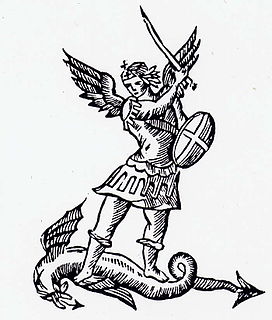 W
WIn Brussels, like in most European cities, one needed the capacity of bourgeois in order to not only exercise political rights, but also to practice a trade, which, in Brussels, meant to be a member of the Guilds and/or of the Seven Noble Houses. The charter of Brussels, as codified in 1570 in articles 206 and following, provided the conditions of admission to the bourgeoisie of the city. The Bourgeois were the patrician class of the city. This social class was abolished by Napoleon during the French occupation.
 W
WOn 18 February 2013, eight masked gunmen in two cars with police markings stole approximately US$50,000,000 worth of diamonds from a Swiss-bound Fokker 100 operated by Helvetic Airways on the apron at Brussels Airport, Belgium, just before 20:00 CET. The heist was accomplished without a shot being fired.
 W
WBrussels (Belgium) is considered the de facto capital of the European Union, having a long history of hosting a number of principal EU institutions within its European Quarter. The EU has no official capital, and no plans to declare one, but Brussels hosts the official seats of the European Commission, Council of the European Union, and European Council, as well as a seat of the European Parliament. In 2013, this presence generated about 250 million euros and 121,000 jobs.
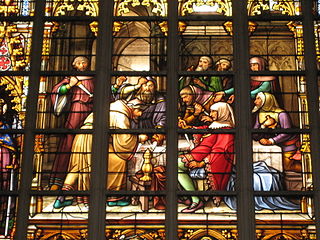 W
WThe Brussels massacre was an anti-Semitic episode in Brussels in 1370 in connection with an alleged host desecration at the Brussels synagogue. A number of Jews, variously given as six or about twenty, were executed or otherwise killed, while the rest of the small community was banished. The event occurred on May 22.
 W
WThe Brussels school is a style or school of sculpture that originated in the Middle Ages. It was born in the 15th century with the construction of Brussels' Hôtel de Ville and Claus Sluter's arrival in Brussels - he lived there from 1380 to 1385 before moving to Dijon.
 W
WThe Brussels sprout, often referred to as just sprout in the UK, is a member of the Gemmifera Group of cabbages, grown for its edible buds. The leaf vegetables are typically 1.5–4.0 cm (0.6–1.6 in) in diameter and look like miniature cabbages. The Brussels sprout has long been popular in Brussels, Belgium, from which it gained its name.
 W
WBrussels tapestry workshops produced tapestry from at least the 15th century, but the city's early production in the Late Gothic International style was eclipsed by the more prominent tapestry-weaving workshops based in Arras and Tournai. In 1477 Brussels, capital of the duchy of Brabant, was inherited by the house of Habsburg; and in the same year Arras, the prominent center of tapestry-weaving in the Low Countries, was sacked and its tapestry manufacture never recovered, and Tournai and Brussels seem to have increased in importance.
 W
WThe Coudenberg or Koudenberg is a small hill in central Brussels (Belgium) where the Palace of Coudenberg was built. For nearly 700 years, the Castle and then Palace of Coudenberg was the seat of government of the counts, dukes, archdukes, kings, emperors and governors, who from the 11th century until its destruction in 1731, exerted their sovereignty over the area of the Duchy of Brabant, now in the southern Netherlands and northern Belgium. After several years of recent excavations, the archaeological vestiges of the palace and its foundations are open to the public.
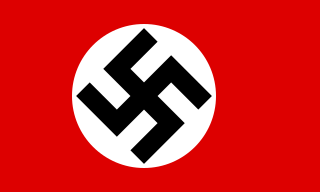 W
WThe District of Brussels was a short-lived de jure administrative polity created by Nazi Germany in 1944. Theoretically, it encompassed the present-day Brussels Capital Region but because the region had been liberated by the Allies in September 1944, it never existed de facto.
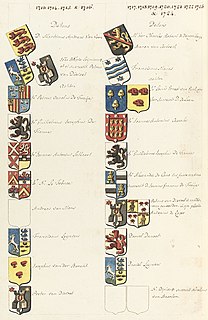 W
WThe Drapery Court also called the Chamber of Commerce in the 18th Century, was one of the oldest and most influential institutions of the City of Brussels during the Ancien Régime and was abolished during the French occupation of Brussels.
 W
WThe Flag of the Brussels-Capital Region consists of a stylized yellow, grey and white iris on a blue background. Note that this is the flag of the whole Brussels Region, and the City of Brussels municipality has a different flag.
 W
WFonderie Nationale des Bronzes was a 19th– and 20th–century artistic studio and foundry in Brussels, Belgium, that specialized in bronze sculptures. It became known for casting the works of Auguste Rodin, Rembrandt Bugatti, Paul Delvaux, and many others.
 W
WLa Fonderie, Brussels Museum of Industry and Labour is a museum of industrial history in Brussels, Belgium. It collects objects, documents and oral history on the city’s industrial past and visualises the working history of Brussels.
 W
WThere were two stages of fortifications of Brussels, the first walls, built in the early 13th century, and the second walls, built in the late 14th century and later upgraded. Today, only a few sections of either remain.
 W
WThe Francization of Brussels refers to the evolution, over the past two centuries, of this historically Dutch-speaking city into one where French has become the majority language and lingua franca. The main cause of this transition was the rapid, yet compulsory assimilation of the Flemish population, amplified by immigration from France and Wallonia.
 W
WThe Free University of Brussels was a university in Brussels, Belgium. Founded in 1834 on the principle of "free inquiry", its founders envisaged the institution as a free-thinker reaction to the traditional dominance of Catholicism in Belgian education. The institutions was avowedly secular and particularly associated with Liberal political movements during the era of pillarisation. The Free University was one of Belgium's major universities, together with the Catholic University of Leuven and the state universities of Liège and Ghent.
 W
WThe Guilds of Brussels, grouped in the Nine Nations of Brussels, were associations of craft guilds that dominated the economic life of the city of Brussels in the late medieval and early modern periods. From 1421 onwards, they were represented in the city government alongside the patrician lineages of the Seven Noble Houses of Brussels, later also in the States of Brabant as members of the Third Estate. As of 1421, they were also able to become members of the Drapery Court of Brussels. Together with the Seven Noble Houses, they formed the bourgeoisie of the city. Some of their guildhouses can still be seen as part of the UNESCO World Heritage Site of the Grand Place in Brussels.
 W
WThe Meyboom plantation is the oldest tradition in Brussels (Belgium), attested since 1308. It is held every year on 9 August, the eve of St Lawrence's Day, and consists mainly in planting a beech at the intersection of Rue des Sables/Zandstraat and Rue du Marais/Broekstraat. It is accompanied by processions and various folk activities during the day. Since 1974, the city of Leuven also claims to be planting the "real" Meyboom.
 W
WThe Mont des Arts or Kunstberg, meaning "hill/mount of the arts", is an urban complex and historic site in the centre of Brussels, Belgium, including the Royal Library of Belgium, the National Archives of Belgium, the Square – Brussels Meeting Centre, and a public garden.
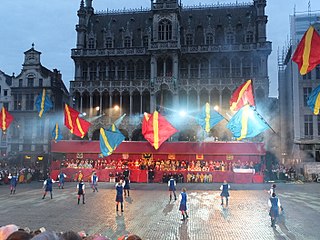 W
WThe Ommegang of Brussels is a traditional Ommegang, a type of medieval pageant, celebrated in Brussels, Belgium.
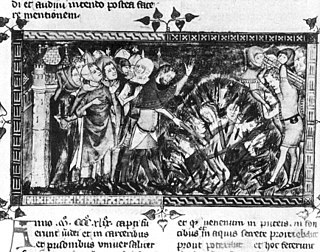 W
WThe Black Death persecutions and massacres were a series of violent attacks on Jewish communities falsely blamed for outbreaks of the Black Death in Europe from 1348 to 1351.
 W
WThe Pipenpoy family (/pɪpɒ̃pwə/), was an old and influential patrician family of Brussels which exercised public functions in the capital of the Duchy of Brabant until the end of the Ancien Régime. It died in 1832 with Catherine de Pipenpoy, who was 100 years old. Several of its members were admitted to the Seven Noble Houses of Brussels.
 W
WR.W.D. Molenbeek, short for Racing White Daring Molenbeek, was a Belgian football club founded in 1909 as White Star Club de Bruxelles. It then became a member of the Belgian Football Association later the same year as White Star Athletic Club and received the registration number 47.
 W
WThe Brussels Ring numbered R0, is a ring road surrounding the city of Brussels as well as other smaller towns south of Brussels. It is about 75 kilometres (47 mi) long, with 2 or 3 lanes in each direction. While most of it is classified as a motorway (highway), part of it is merely an express route. It crosses the 3 regions of Belgium: its main part is situated in Flanders, whereas Wallonia comprises 18.2 kilometres (11.3 mi) of the total stretch and 5.5 kilometres (3.4 mi) is on Brussels territory.
 W
WThe Royal Theatre Toone, is a folkloric theatre of marionettes in Brussels (Belgium), active since 1830, and the only traditional Brussels puppet theatre still in operation. To this day, it puts on puppet plays in Marols, the traditional Brabantian dialect of Brussels. The building also houses a tavern and a small Brussels puppetry museum.
 W
WSaint-Géry Island or Sint-Goriks Island was the largest island in the Senne (Zenne) river in Brussels, Belgium. It was named after Saint Gaugericus of Cambrai, who built a chapel there around 580; hence the name "Brussels", which comes from Bruocsella or Broekzele, meaning "settlement in the marsh". It ceased to exist as an island when the Senne was covered over in the late 19th century.
 W
WThe Seven Noble Houses of Brussels were the seven families or clans whose descendants formed the patrician class and urban aristocracy of Brussels.
 W
WThe Brussels small ring inner ring road, formally R20 is a series of roadways in central Brussels, Belgium, surrounding the historic city centre. The city centre is usually defined as the area within the small ring; this area is called the pentagon due to its pentagonal shape. The pentagon forms the core of the City of Brussels municipality.
 W
WThe Sonian Forest or Sonian Wood is a 4,421-hectare (10,920-acre) forest at the southeast edge of Brussels, Belgium.
 W
WStarlab NV/SA was a multidisciplinary, blue sky research institute established to serve as an incubator for long-term and basic research in the spirit of Bell Labs, MIT Media Lab, Xerox PARC, and Interval Research. Its primary headquarters was based in Brussels, Belgium from 1996 to 2001. A second base of operations, Starlab Barcelona, was established in 2000 and remains in operation.
 W
WSweder III of Zuylen of Abcoude, Lord of Gaasbeek, Putte, Strijen, Wijk, and Durstede was a councillor to Joanna, Duchess of Brabant and became infamous for ordering the murder of Everard t'Serclaes.
 W
WThe Temple of the Augustinians or Augustine Church in Brussels was a baroque-style church designed by the architect Jacob Franquart for the Augustinians order in Brusssels. It was built from 1621 to 1642. It was located on De Brouckère Square in the centre of Brussels until its demolition in 1893–1894.
 W
WEverard t'Serclaes, lord of Kruikenburg, was a citizen of Brussels, who was made famous by his recovery of that city from the Flemings. His brother, Jean, was bishop of Cambrai.
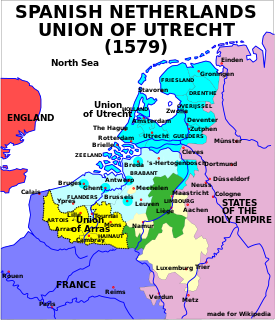 W
WThe Union of Utrecht was a treaty signed on 23 January 1579 in Utrecht, Netherlands, unifying the northern provinces of the Netherlands, until then under the control of Habsburg Spain.
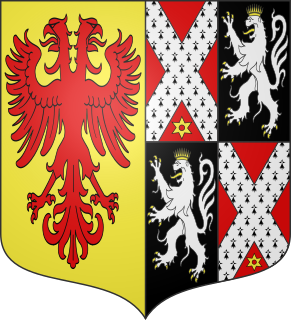 W
WThe van der Meulen family of Brussels was an important bourgeois family of freshwater fish merchants. Many of its members were deans of the guild of freshwater fish merchants.
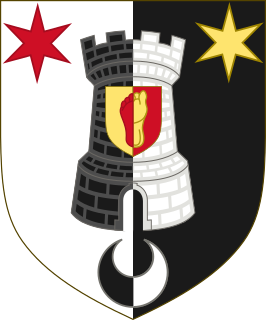 W
WThe Van Dievoet family is a Belgian family originating from the Duchy of Brabant. It descends from the Seven Noble Houses of Brussels and its members have been bourgeois (burgess) of that city since the 1600s. It formed, at the end of the 17th century, a now extinct noble Parisian branch called Vandive.
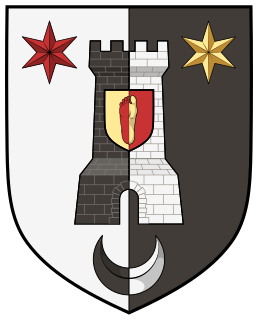 W
WThe Vandive family was a Parisian and elder branch of the Van Dievoet family from Brussels, descended from goldsmith Philippe Van Dievoet, the brother of famous Brussels sculptor Peter Van Dievoet. The family were first bourgeois of Paris before becoming part of the French nobility.
 W
WThe Vauxhall of Brussels, otherwise known as the Waux-Hall, is a historic building in Brussels' Park in Brussels, Belgium. It is named after the pleasure gardens of Vauxhall in London, which only became known to the inhabitants of Brussels in 1761, when a ballet entitled Le Phaxal was put on at La Monnaie/De Munt theatre. In Paris, the stage-builder Torré opened a "garden of amusements" in 1764, which the public came to call the Vaux-Hall de Torré. A Vaux-Hall d'hiver was set up in 1769 at the Foire Saint-Germin.
 W
WThe Vrije Universiteit Brussel (VUB) listen (help·info) is a Dutch- and English-speaking research university located in Brussels, Belgium. It has four campuses: Brussels Humanities, Science and Engineering Campus, Brussels Health Campus, Brussels Technology Campus and Brussels Photonics Campus.
 W
WThe Wittouck family (/witʊk/) is a noble Belgian family, that descends from the Seven Noble Houses of Brussels, established in Brussels since the 18th century.